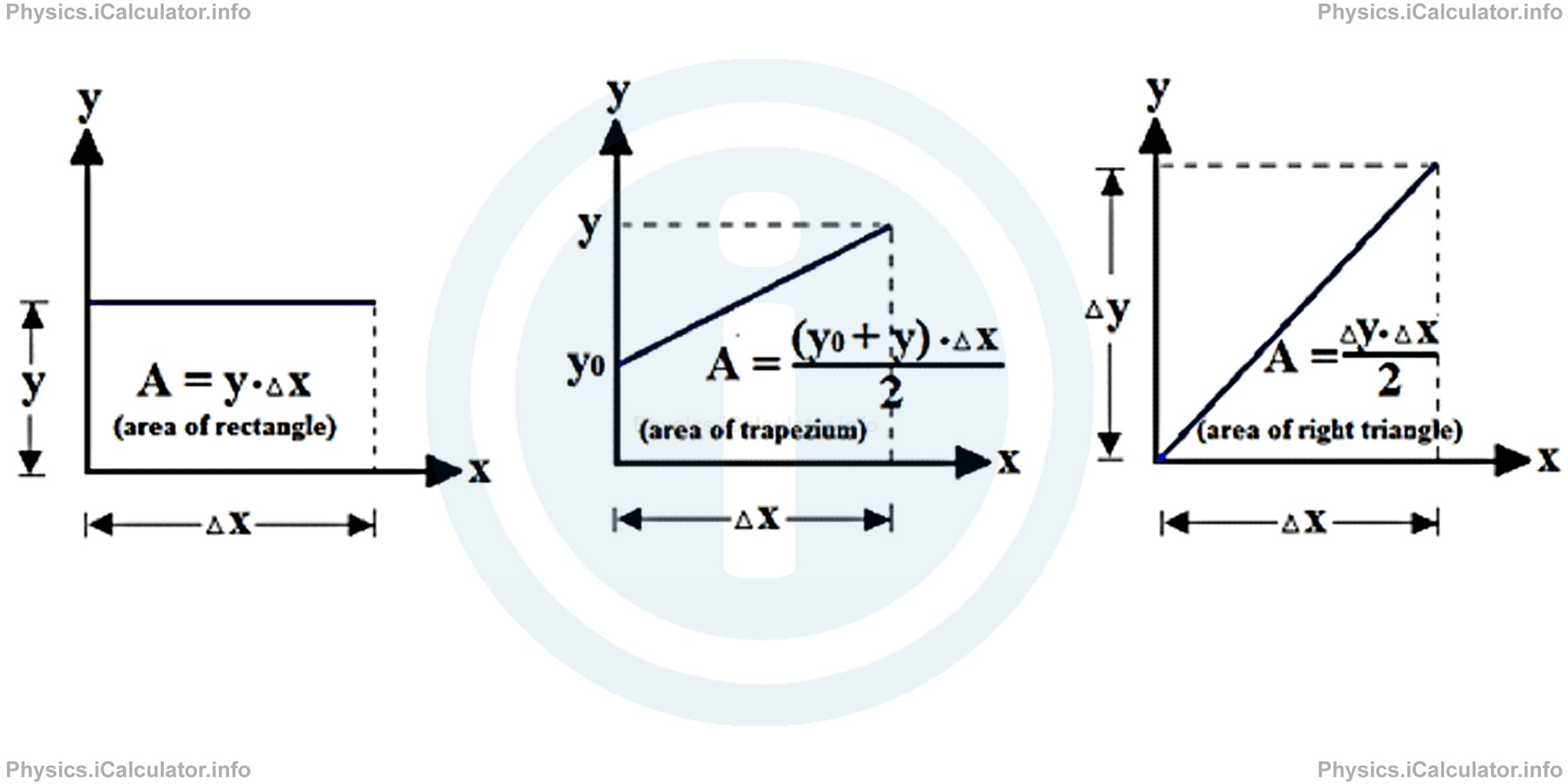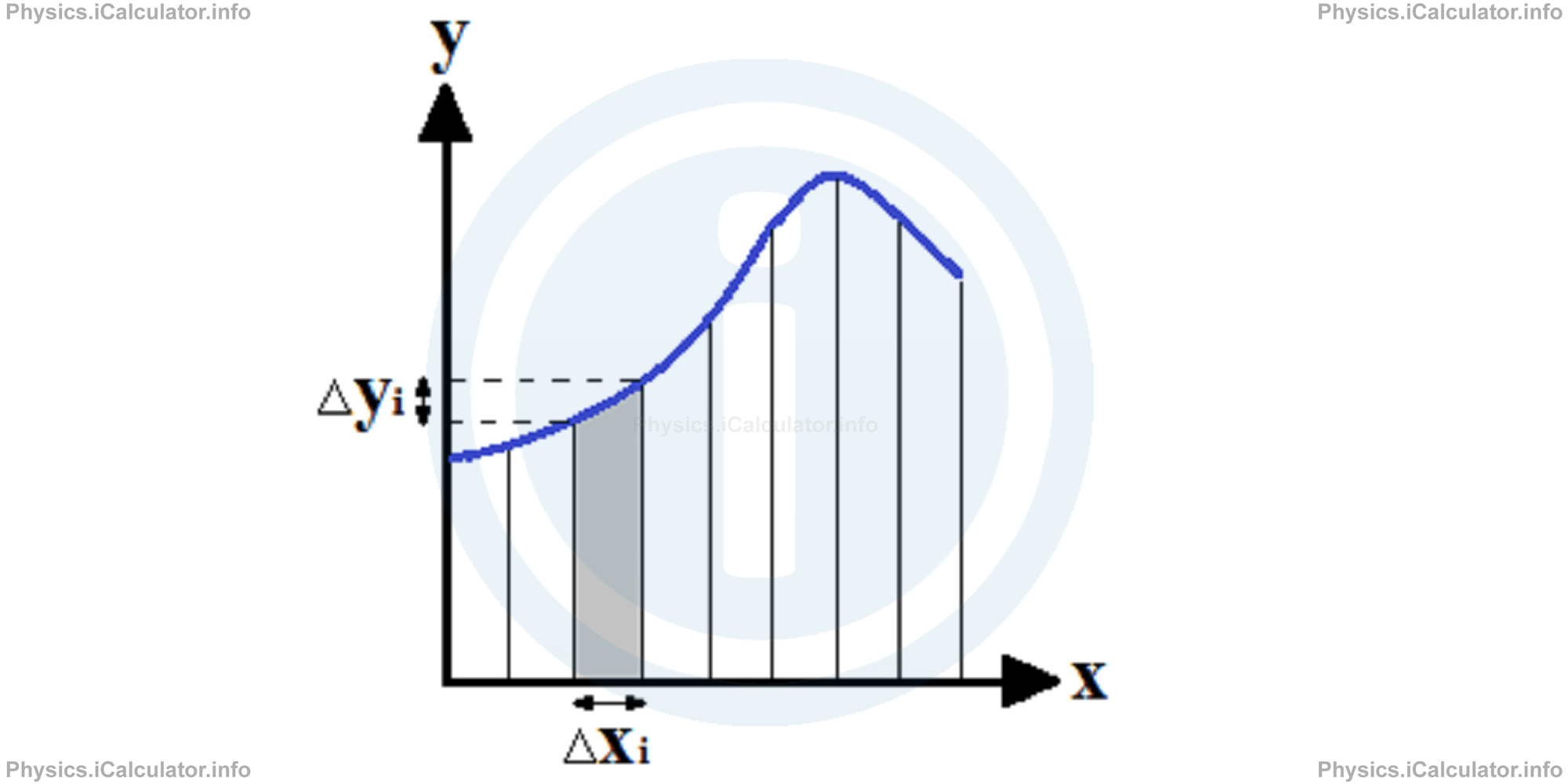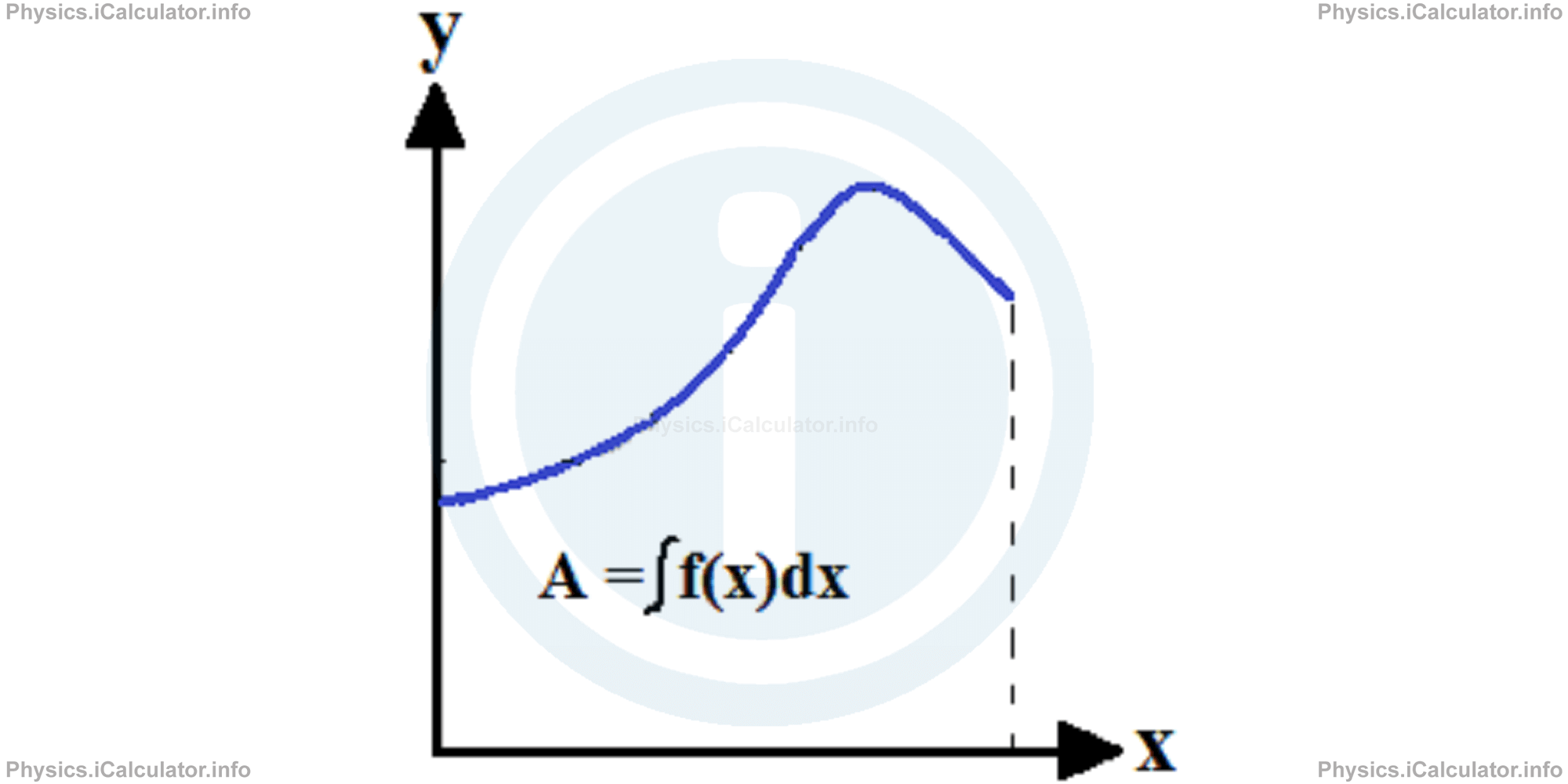Menu
Physics Lesson 16.6.1 - Useful Mathematical Background: Integral of a function - Geometrical approach
Please provide a rating, it takes seconds and helps us to keep this resource free for all to use
Welcome to our Physics lesson on Useful Mathematical Background: Integral of a function - Geometrical approach, this is the first lesson of our suite of physics lessons covering the topic of Ampere's Law, you can find links to the other lessons within this tutorial and access additional physics learning resources below this lesson.
Useful Mathematical Background: Integral of a function - Geometrical approach
When the graph of a function has a non-complex shape - such as a straight line, parabola, trapezium and so on - the area under the graph is easy to calculate as we use known geometric formulae to find it. Look at a few examples below.

However, for more complex curves we cannot find the area under the graph that easily. In such situations, we divide the area under the graph in very small vertical strips of the same thickness Δx (more strips we have, better is) as shown in the figure below.

Each strip can be considered as a small trapezium of height Δx the bases of which have a difference in length of Δy. If we choose to consider one of the small trapeziums (the i-th trapezium), we obtain for its area based on the known formula:
Ai = (yi + yi-1) ∙ ∆x/2
Since
where < yi > is the average value of function in the i-th interval, we obtain for the area of the i-th trapezium:
When we want to calculate the total area under the graph, we consider all small trapeziums formed when dividing the area according the above way. Thus, we write
Usually we write f(x) instead of y. Thus, we have for the area under the graph.
= < f(x1 )> ∙ ∆x + < f(x2 )> ∙ ∆x + ⋯ + < f(xi )> ∙ ∆x + ⋯ + < f(xn )> ∙ ∆x
where < f(x1) >, < f(x2) >, < f(xi) >, < f(xn) >, are the average values of function in the 1st, 2nd, ith and nth trapezium respectively. (We have used the method of dividing the graph in small trapeziums when calculating the instantaneous velocity for example. In that case, we considered the slope of the graph around a given point, which corresponds to the lateral side of the small trapezium considered).
The area under the graph calculated in the above way is not 100% accurate as the graph is often a curve, not a straight line. The accuracy increases when we increase the number of divisions (the number of trapeziums therefore) so that the curve resembles more and more to a straight line (remember the Earth shape; it is curved but for small distances it looks flat). Therefore, the accuracy of the area-under-the-graph calculation would be very high if we increased the number of divisions (of small trapeziums) to infinity. In this case, we don't use anymore the symbol "Δ" to represent the width of interval but the symbol "d" instead, which is a symbol used for infinitely small intervals. Also, we use the symbol "∫" instead of "Σ" to represent the sum of all the individual areas of the small trapeziums. In this case, the average value of function fits more and more its lower and upper value in the given trapezium (trapeziums looks more and more as rectangles). Therefore, the last equation becomes
The above expression is called the integral of the function f(x). Geometrically, it represents the area confined by the graph, the horizontal axis and the two vertical lines drawn from the extremities of the graph to the horizontal axis.

The small horizontal segment "dx" is known as the differential part of the integral. It represents the width of each small vertical strip (interval). In other words, dx represents the height of each small trapezium obtained through the above method.
There is a specific method to find the value of integral for a given function. It is widely discussed in mathematics textbooks, but here we will give a few examples of integrals of some ordinary functions.
1- The integral of a constant:
where a can be aby number, including 1.
2- The integral of a power:
3- The integral of exponential function ex:
4- The integral of sine and cosine function
and
∫cosx dx = sinx
5- The integral of 1/x:
6- The integral of differential gives the function itself as they are the inverse of each other. For example:
= 2x2/2
= x2
Some of the above integrals are used to describe magnetic properties of matter such as Ampere's law, which we will explain in the next paragraph.
You have reached the end of Physics lesson 16.6.1 Useful Mathematical Background: Integral of a function - Geometrical approach. There are 5 lessons in this physics tutorial covering Ampere's Law, you can access all the lessons from this tutorial below.
More Ampere's Law Lessons and Learning Resources
Whats next?
Enjoy the "Useful Mathematical Background: Integral of a function - Geometrical approach" physics lesson? People who liked the "Ampere's Law lesson found the following resources useful:
- Geometrical Approach Feedback. Helps other - Leave a rating for this geometrical approach (see below)
- Magnetism Physics tutorial: Ampere's Law. Read the Ampere's Law physics tutorial and build your physics knowledge of Magnetism
- Magnetism Revision Notes: Ampere's Law. Print the notes so you can revise the key points covered in the physics tutorial for Ampere's Law
- Magnetism Practice Questions: Ampere's Law. Test and improve your knowledge of Ampere's Law with example questins and answers
- Check your calculations for Magnetism questions with our excellent Magnetism calculators which contain full equations and calculations clearly displayed line by line. See the Magnetism Calculators by iCalculator™ below.
- Continuing learning magnetism - read our next physics tutorial: Faraday's Law of Induction
Help others Learning Physics just like you
Please provide a rating, it takes seconds and helps us to keep this resource free for all to use
We hope you found this Physics lesson "Ampere's Law" useful. If you did it would be great if you could spare the time to rate this physics lesson (simply click on the number of stars that match your assessment of this physics learning aide) and/or share on social media, this helps us identify popular tutorials and calculators and expand our free learning resources to support our users around the world have free access to expand their knowledge of physics and other disciplines.
Magnetism Calculators by iCalculator™
- Angular Frequency Of Oscillations In Rlc Circuit Calculator
- Calculating Magnetic Field Using The Amperes Law
- Capacitive Reactance Calculator
- Current In A Rl Circuit Calculator
- Displacement Current Calculator
- Electric Charge Stored In The Capacitor Of A Rlc Circuit In Damped Oscillations Calculator
- Electric Power In A Ac Circuit Calculator
- Energy Decay As A Function Of Time In Damped Oscillations Calculator
- Energy Density Of Magnetic Field Calculator
- Energy In A Lc Circuit Calculator
- Faradays Law Calculator
- Frequency Of Oscillations In A Lc Circuit Calculator
- Impedance Calculator
- Induced Emf As A Motional Emf Calculator
- Inductive Reactance Calculator
- Lorentz Force Calculator
- Magnetic Dipole Moment Calculator
- Magnetic Field At Centre Of A Current Carrying Loop Calculator
- Magnetic Field In Terms Of Electric Field Change Calculator
- Magnetic Field Inside A Long Stretched Current Carrying Wire Calculator
- Magnetic Field Inside A Solenoid Calculator
- Magnetic Field Inside A Toroid Calculator
- Magnetic Field Produced Around A Long Current Carrying Wire
- Magnetic Flux Calculator
- Magnetic Force Acting On A Moving Charge Inside A Uniform Magnetic Field Calculator
- Magnetic Force Between Two Parallel Current Carrying Wires Calculator
- Magnetic Potential Energy Stored In An Inductor Calculator
- Output Current In A Transformer Calculator
- Phase Constant In A Rlc Circuit Calculator
- Power Factor In A Rlc Circuit Calculator
- Power Induced On A Metal Bar Moving Inside A Magnetic Field Due To An Applied Force Calculator
- Radius Of Trajectory And Period Of A Charge Moving Inside A Uniform Magnetic Field Calculator
- Self Induced Emf Calculator
- Self Inductance Calculator
- Torque Produced By A Rectangular Coil Inside A Uniform Magnetic Field Calculator
- Work Done On A Magnetic Dipole Calculator